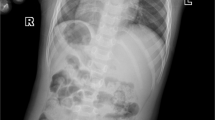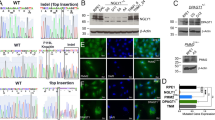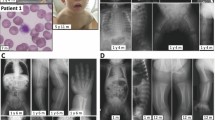Abstract
Congenital disorders of glycosylation (CDG) represent an emerging and significant category within the spectrum of inborn errors of metabolism. CDG comprise a heterogeneous group of diseases caused by defects at various stages of the glycosylation pathway. Each year, new types of CDG are identified, and to date, pathogenic variants in 189 genes have been associated with over 200 distinct human glycosylation-related disorders. Each type of CDG exhibits characteristic clinical features. Many of CDG result in multisystem involvement, with the central nervous system being particularly affected. Clinical manifestations are highly variable and may include developmental delays, growth impairment, neurological abnormalities such as ataxia, hepatic dysfunction, cardiac defects, coagulation disorders, and abnormal fat distribution. In patients with unexplained neurological symptoms, it is now standard practice to include CDG in the differential diagnosis. Detection of altered glycosylation patterns in serum proteins is essential in the diagnostic evaluation of CDG. Analytical techniques allow the identification of defects in N-glycosylation, O-glycosylation, and combined glycosylation pathways. Once abnormalities in glycosylation are detected, subsequent genetic analysis is necessary to identify causative variants. Our research institute has contributed to the CDG diagnostic support center in Japan by developing novel analytical methods utilizing mass spectrometry. Through these efforts, we have facilitated the molecular diagnosis of 66 patients with CDG across Japan. In this report, we provide an overview of the current landscape of CDG in Japan, along with a summary of the screening and diagnostic processes.
This is a preview of subscription content, access via your institution
Access options
Subscribe to this journal
Receive 12 print issues and online access
$259.00 per year
only $21.58 per issue
Buy this article
- Purchase on SpringerLink
- Instant access to full article PDF
Prices may be subject to local taxes which are calculated during checkout



Similar content being viewed by others
Data availability
The data that support the findings of this study are available from the corresponding author upon reasonable request.
References
Jaeken J, van Eijk HG, van der Heul C, Corbeel L, Eeckels R, Eggermont E. Sialic acid-deficient serum and cerebrospinal fluid transferrin in a newly recognized genetic syndrome. Clin Chim Acta. 1984;144:245–7. https://doi.org/10.1016/0009-8981(84)90059-7.
Matthijs G, Schollen E, Pardon E, Veiga-Da-Cunha M, Jaeken J, Cassiman JJ, et al. Mutations in PMM2, a phosphomannomutase gene on chromosome 16p13, in carbohydrate-deficient glycoprotein type I syndrome (Jaeken syndrome). Nat Genet. 1997;16:88–92. https://doi.org/10.1038/ng0597-88.
Altassan R, Péanne R, Jaeken J, Barone R, Bidet M, Borgel D, et al. International clinical guidelines for the management of phosphomannomutase 2-congenital disorders of glycosylation: diagnosis, treatment and follow up. J Inherit Metab Dis. 2019;42:5–28. https://doi.org/10.1002/jimd.12024.
Ng BG, Freeze HH, Himmelreich N, Blau N, Ferreira CR. Clinical and biochemical footprints of congenital disorders of glycosylation: proposed nosology. Mol Genet Metab. 2024;142:108476. https://doi.org/10.1016/j.ymgme.2024.108476.
Okamoto N, Kadoya M, Wada Y. Clinical and molecular features of patients with congenital disorders of glycosylation in Japan. JIMD Rep. 2025;66:e70011. https://doi.org/10.1002/jmd2.70011.
De Graef D, Ligezka AN, Rezents J, Mazza GL, Preston G, Schwartz K, et al. Coagulation abnormalities in a prospective cohort of 50 patients with PMM2-congenital disorder of glycosylation. Mol Genet Metab. 2023;139:107606. https://doi.org/10.1016/j.ymgme.2023.107606.
Holubova V, Barone R, Grunewald S, Tesařová M, Hansíková H, Augustínová J, et al. Clinical severity and cardiac phenotype in phosphomannomutase 2-congenital disorders of glycosylation: insights into genetics and management recommendations. J Inherit Metab Dis. 2025;48:e12826. https://doi.org/10.1002/jimd.12826.
Ohno K, Yuasa I, Akaboshi S, Itoh M, Yoshida K, Ehara H, et al. The carbohydrate deficient glycoprotein syndrome in three Japanese children. Brain Dev. 1992;14:30–5. https://doi.org/10.1016/s0387-7604(12)80276-2.
Wada Y, Nishikawa A, Okamoto N, Inui K, Tsukamoto H, Okada S, et al. Structure of serum transferrin in carbohydrate-deficient glycoprotein syndrome. Biochem Biophys Res Commun. 1992;189:832–6. https://doi.org/10.1016/0006-291x(92)92278-6.
Wada Y, Okamoto N. Electrospray ionization mass spectrometry of Apolipoprotein CIII to evaluate O-glycan site occupancy and sialylation in congenital disorders of glycosylation. Mass Spectrom. 2022;11:A0104. https://doi.org/10.5702/massspectrometry.A0104.
Wada Y, Okamoto N. Electrospray ionization mass spectrometry of transferrin: use of quadrupole mass analyzers for congenital disorders of glycosylation. Mass Spectrom. 2022;11:A0103. https://doi.org/10.5702/massspectrometry.A0103.
Wada Y, Kadoya M, Okamoto N. Mass spectrometry of transferrin and Apolipoprotein CIII from dried blood spots for congenital disorders of glycosylation. Mass Spectrom. 2022;11:A0113. https://doi.org/10.5702/massspectrometry.A0113.
Wada Y, Kadoya M, Okamoto N. Mass spectrometry of apolipoprotein C-III, a simple analytical method for mucin-type O-glycosylation and its application to an autosomal recessive cutis laxa type-2 (ARCL2) patient. Glycobiology. 2012;22:1140–4. https://doi.org/10.1093/glycob/cws086.
Wada Y, Okamoto N. Apolipoprotein C-III O-glycoform profiling of 500 serum samples by matrix-assisted laser desorption/ionization mass spectrometry for diagnosis of congenital disorders of glycosylation. J Mass Spectrom. 2021;56:e4597. https://doi.org/10.1002/jms.4597.
Wada Y. Mass spectrometry as a first-line diagnostic aid for congenital disorders of glycosylation. Mass Spectrom. 2025;14:A0169. https://doi.org/10.5702/massspectrometry.A0169.
Pajusalu S, Vals MA, Serrano M, Witters P, Cechova A, Honzik T, et al. Genotype/phenotype relationship: lessons from 137 patients with PMM2-CDG. Hum Mutat. 2024;2024:8813121. https://doi.org/10.1155/2024/8813121.
Takahashi Y, Date H, Oi H, Adachi T, Imanishi N, Kimura E, et al. Six years’ accomplishment of the initiative on rare and undiagnosed diseases: nationwide project in Japan to discover causes, mechanisms, and cures. J Hum Genet. 2022;67:505–13. https://doi.org/10.1038/s10038-022-01025-0.
Schollen E, Kjaergaard S, Legius E, Schwartz M, Matthijs G. Lack of Hardy-Weinberg equilibrium for the most prevalent PMM2 mutation in CDG-Ia (congenital disorders of glycosylation type Ia). Eur J Hum Genet. 2000;8:367–71. https://doi.org/10.1038/sj.ejhg.5200470.
Pérez-Cerdá C, Girós ML, Serrano M, Ecay MJ, Gort L, Pérez Dueñas B, et al. Population-based study on congenital disorders of protein N- and combined with O-glycosylation experience in clinical and genetic diagnosis. J Pediatr. 2017;183:170–7.e1. https://doi.org/10.1016/j.jpeds.2016.12.060.
Asteggiano CG, Papazoglu M, Bistué Millón MB, Peralta MF, Azar NB, Spécola NS, et al. Ten years of screening for congenital disorders of glycosylation in Argentina: case studies and pitfalls. Pediatr Res. 2018;84:837–41. https://doi.org/10.1038/s41390-018-0206-6.
Quelhas D, Martins E, Azevedo L, Bandeira A, Diogo L, Garcia P, et al. Congenital disorders of glycosylation in Portugal—two decades of experience. J Pediatr. 2021;231:148–56. https://doi.org/10.1016/j.jpeds.2020.12.026.
Lipiński P, Bogdańska A, Tylki-Szymańska A. Congenital disorders of glycosylation: prevalence, incidence and mutational spectrum in the Polish population. Mol Genet Metab Rep. 2021;27:100726. https://doi.org/10.1016/j.ymgmr.2021.100726.
Paprocka J, Jezela-Stanek A, Tylki-Szymańska A, Grunewald S. Congenital disorders of glycosylation from a neurological perspective. Brain Sci. 2021;11:88. https://doi.org/10.3390/brainsci11010088.
Silver G, Bahl S, Cordeiro D, Thakral A, Athey T, Mercimek-Andrews S. Prevalence of congenital disorders of glycosylation in childhood epilepsy and effects of anti-epileptic drugs on the transferrin isoelectric focusing test. Genes. 2021;12:1227. https://doi.org/10.3390/genes12081227.
Park JH, Marquardt T. Treatment options in congenital disorders of glycosylation. Front Genet. 2021;12:735348. https://doi.org/10.3389/fgene.2021.735348.
Witters P, Tahata S, Barone R, Õunap K, Salvarinova R, Grønborg S, et al. Clinical and biochemical improvement with galactose supplementation in SLC35A2-CDG. Genet Med. 2020;22:1102–7. https://doi.org/10.1038/s41436-020-0767-8.
Iyer S, Sam FS, DiPrimio N, Preston G, Verheijen J, Murthy K, et al. Repurposing the aldose reductase inhibitor and diabetic neuropathy drug epalrestat for the congenital disorder of glycosylation PMM2-CDG. Dis Model Mech. 2019;12:dmm040584. https://doi.org/10.1242/dmm.040584.
Budhraja R, Radenkovic S, Jain A, Muffels IJJ, Ismaili MHA, Kozicz T, et al. Liposome-encapsulated mannose-1-phosphate therapy improves global N-glycosylation in different congenital disorders of glycosylation. Mol Genet Metab. 2024;142:108487. https://doi.org/10.1016/j.ymgme.2024.108487.
Zhong ML, Lai K. AAV-based gene replacement therapy prevents and halts manifestation of abnormal neurological phenotypes in a novel mouse model of PMM2-CDG. Gene Ther. 2025. https://doi.org/10.1038/s41434-025-00525-w.
Muffels IJJ, Kozicz T, Perlstein EO, Morava E. The therapeutic future for congenital disorders of glycosylation. J Inherit Metab Dis. 2025;48:e70011. https://doi.org/10.1002/jimd.70011.
Acknowledgements
This study was supported by grants from the Japan Agency for Medical Research and Development (Grant nos. 24ek0109614h0003, 21ek0109418h0003).
Author information
Authors and Affiliations
Contributions
All authors contributed to the study conceptualization, design, data collection, analysis, and interpretation of the data, as well as the drafting and revising of the manuscript. NO was responsible for the writing and editing of the final version of the manuscript. YW contributed to the development of glycan analysis techniques. MK performed the practical tasks of mass spectrometry.
Corresponding author
Ethics declarations
Competing interests
The authors declare no competing interests.
Ethical approval
This study was approved by the institutional review board.
Patient consent
The procedures in this study were performed in accordance with the ethical standards for medical research outlined in the Helsinki Declaration. Informed consent was obtained from all patients and/or parents included in the study.
Additional information
Publisher’s note Springer Nature remains neutral with regard to jurisdictional claims in published maps and institutional affiliations.
Rights and permissions
Springer Nature or its licensor (e.g. a society or other partner) holds exclusive rights to this article under a publishing agreement with the author(s) or other rightsholder(s); author self-archiving of the accepted manuscript version of this article is solely governed by the terms of such publishing agreement and applicable law.
About this article
Cite this article
Okamoto, N., Kadoya, M. & Wada, Y. Approaches to diagnostic screening for congenital disorders of glycosylation and its prevalence in Japan. J Hum Genet (2025). https://doi.org/10.1038/s10038-025-01362-w
Received:
Accepted:
Published:
DOI: https://doi.org/10.1038/s10038-025-01362-w
This article is cited by
-
Novel glycan-related biomarker discovery by total glycomic and focused protein glycomic analyses
Journal of Human Genetics (2025)



